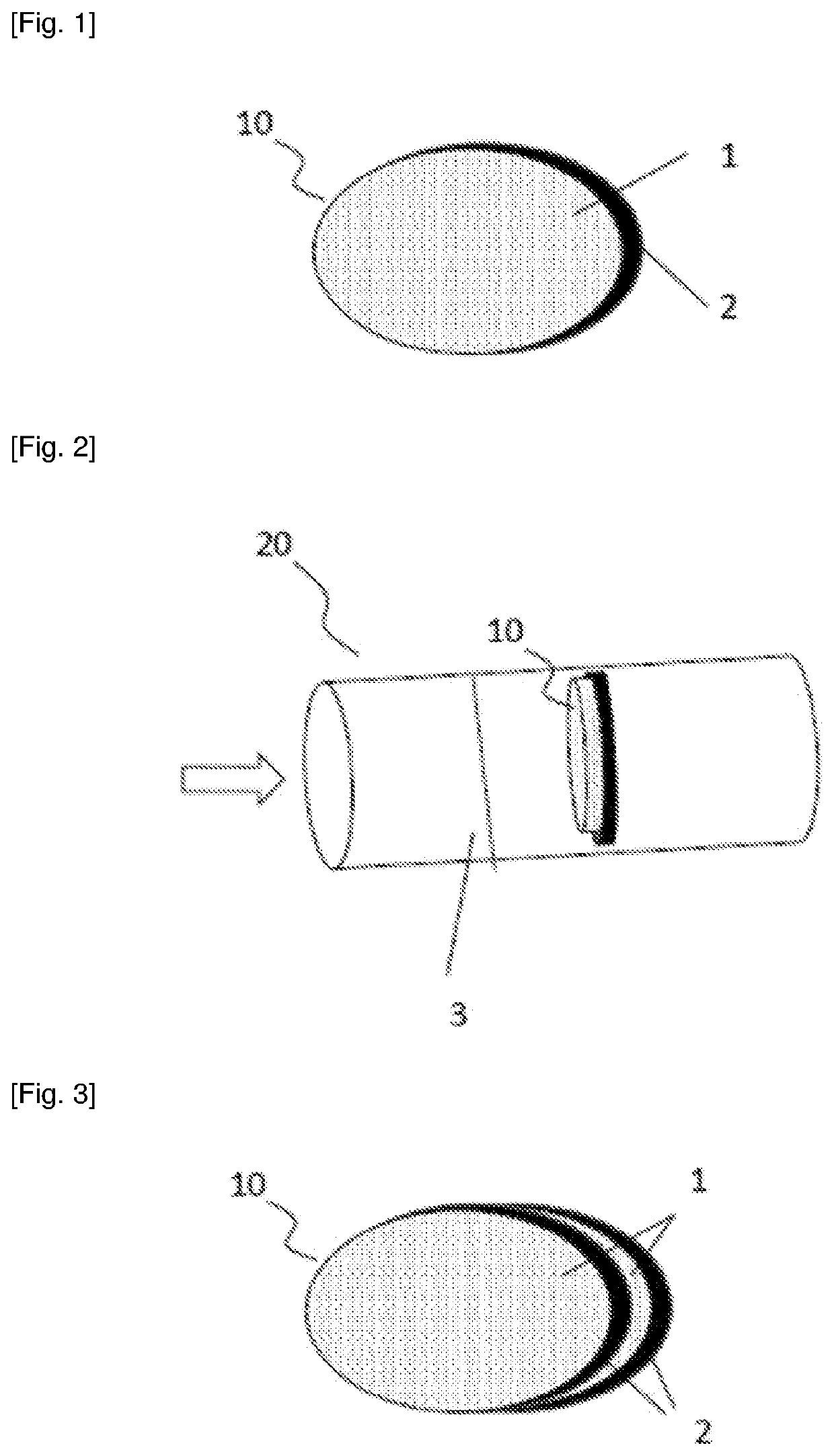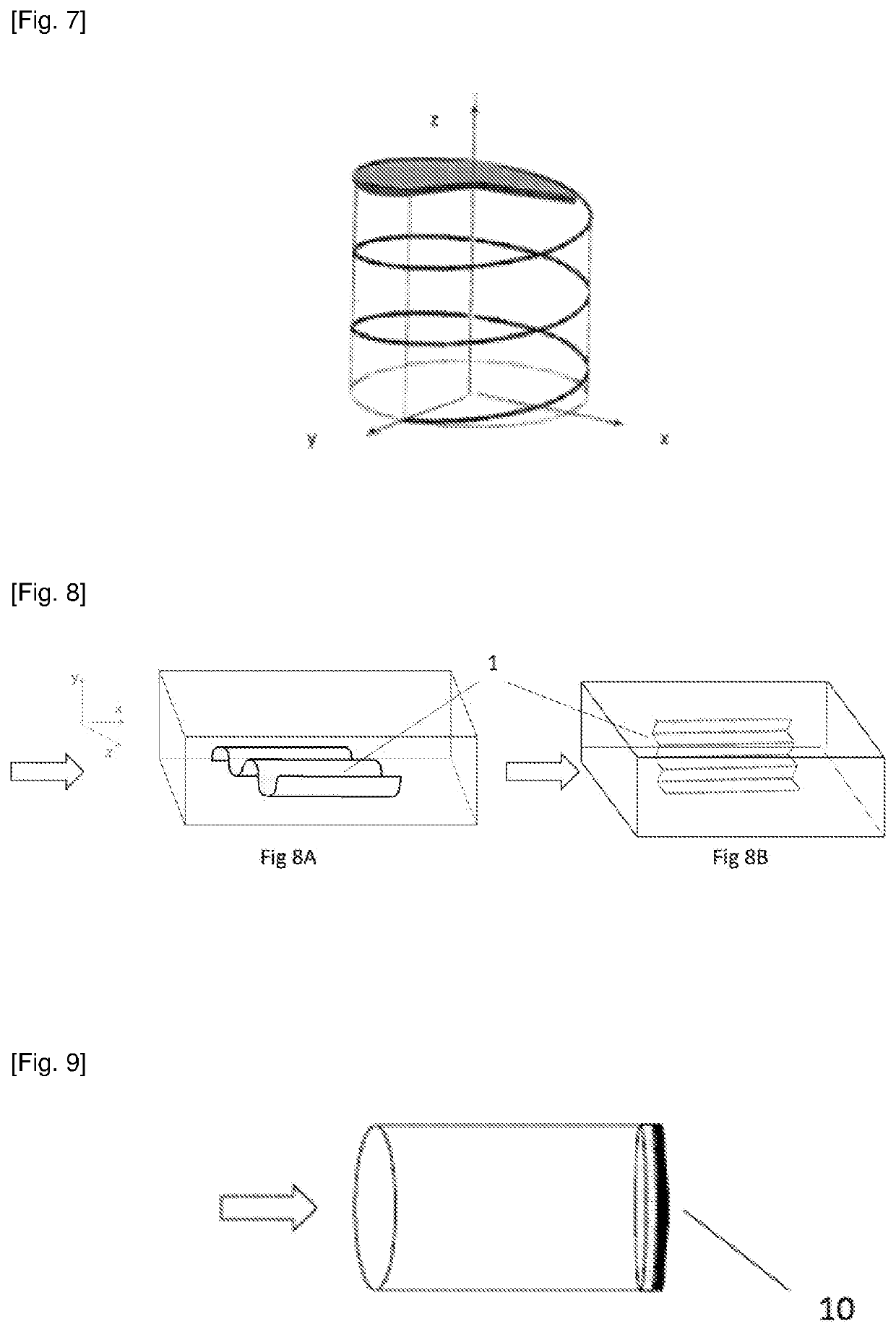Wireless amagnetic heating module
a technology of amagnetic heating and wireless induction, which is applied in the direction of induction heating, electric/magnetic/electromagnetic heating, melt circulation arrangement, etc., can solve the problems of inability to establish a standard parameter with maximum efficiency common to multiple uses and applications, and the most inefficient and difficult control system. , to achieve the effect of high thermal conductivity
- Summary
- Abstract
- Description
- Claims
- Application Information
AI Technical Summary
Benefits of technology
Problems solved by technology
Method used
Image
Examples
examples
[0088]Four surveys were conducted: 1, 2, 3 and 4.
Investigation Protocol 1
[0089]The experimental activities were conducted on three samples composed of:
[0090]a. cylindrical chamber made of polymeric material with an internal diameter of 33 mm, closed at both ends except for a central 3 mm hole for fluid entry;
[0091]b. a solenoid inductor outside the 12-turn cylindrical chamber, made with a multi-conductor copper wire insulated without a 1.5 mm outer pipe;
[0092]c. nr.6 wireless amagnetic heating modules composed by an embossed surface 1 (dot embossing) of about 6.3 micrometers of an amagnetic alloy as shown below;
[0093]d. a layer of adhesive resistant up to 300° C. and a dielectric plane 2 of 10 micrometers.
TABLE 3composition of the inductive amagnetic alloy, 1A experimentDiamagnetic metalsaluminium 98%Ferromagnetic metaliron 1.2%Other Metals0.8%
[0094]In number 6 wireless amagnetic heating modules are spaced from cylindrical dielectrics with a thickness of 2.5 mm and a diameter of 1 ...
experiment 2a
[0103]Embossed amagnetic top 1 composed of a 50 mm sheet for 50 mm and a thickness of 100 micrometers of an alloy so composed.
TABLE 4inductive amagnetic alloy 2A experimentMain Diamagnetic metalsCopperzinc64%35.25%Ferromagnetic metalsIronNickel0.1% 0.3%Other metals0.35%
[0104]Results of the experimental tests 2A: Starting temperature: 26° C.; Temperature reached: 10° C.; Trial duration: 65 sec; Average power absorbed in the ascent: 65W.
experiment 2b
[0105]Embossed amagnetic top 1 composed of an inductive amagnetic foil of 50 millimeters by 50 millimeters and of a thickness of about 6 micrometres composed of
TABLE 5inductive amagnetic alloy 2B experimentDiamagnetic metalsAluminium 98%Ferromagnetic metalIron1.2%Other Metals0.8%
[0106]Results of the experimental tests 2B: Starting temperature: 34° C.; Temperature reached: 93° C.; Trial duration: 20 sec; Average power absorbed in the ascent: 60W.
PUM
 Login to View More
Login to View More Abstract
Description
Claims
Application Information
 Login to View More
Login to View More - R&D
- Intellectual Property
- Life Sciences
- Materials
- Tech Scout
- Unparalleled Data Quality
- Higher Quality Content
- 60% Fewer Hallucinations
Browse by: Latest US Patents, China's latest patents, Technical Efficacy Thesaurus, Application Domain, Technology Topic, Popular Technical Reports.
© 2025 PatSnap. All rights reserved.Legal|Privacy policy|Modern Slavery Act Transparency Statement|Sitemap|About US| Contact US: help@patsnap.com



